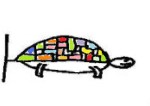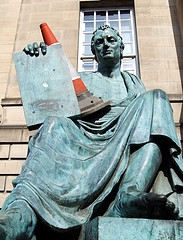 Women of the Sky talks with Helen Sharman OBE, the first Brit in space.
Women of the Sky talks with Helen Sharman OBE, the first Brit in space.
Helen Sharman was working as a chemist for a chocolate company when she heard a radio advert broadcasting a simple request: “Astronaut wanted: no experience necessary.”
She replied, one among 13,000 hopefuls, and was picked to become the first Brit to travel in space.
On May 18th she squeezed into a Soviet Soyuz TM-12 space capsule bound for the Mir space station.
She took with her a photo of the Queen, a butterfly broach her father gave her, and a ‘space passport’ in case they landed outside the Soviet Union on thier return.
She remains the only British national who hasn’t had to gain US citizenship before blasting off.
Since returning to earth Ms. Sharman has led a quiet life but on the 20th anniversary of her mission she shared her memories with Women of the Sky of those eight days in space.
Were you interested in science from an early age?
I have always been interested in what makes things the way they are, whether it be nature, astronomy or the workings of a car. My father is a physicist and I suppose it was his early explanations that made me realise how relevant to life is the understanding of science.
Out of all the people who replied to the radio ad what do you think made the organisers choose you?
The selection criteria for my mission were based on medical and psychological health and fitness, an ability to understand spacecraft systems and to perform experiments, an aptitude for foreign languages and the ability to work well in a team under stressful circumstances.
What is the training like for an aspiring astronaut?
My training consisted of learning Russian, theoretical lessons about astronavigation and ballistics, more practical spacecraft systems training and simulator work, weightless training, training to prepare us for a return into sea if necessary and learning about the experiments I was to perform.
Can you describe what take-off feels like?
The launch itself is not smooth but lumpy as fuel is used up and the engines are jettisoned. Sitting in the same cramped position wearing a space suit for the five hours before, during and after the launch is uncomfortable and sweaty.
However, the launch itself only lasts for eight minutes before the final rocket stage is jettisoned and the feeling of weightless begins, albeit while still strapped in a seat for two more hours.
What does weightlessness feel like?
Is it the most relaxing feeling I have ever experienced. Not standing or sitting yet just being is wonderful.
The nearest experience on Earth is to float on top of the water in a swimming pool without trying to move. Feeling weightless is something that takes a couple of days to get accustomed to.
Body fluids redistribute themselves towards your head to start with and it feels uncomfortable. The body excretes two litres of urine in addition to that which would be expected for the amount of fluids ingested, after which you feel more comfortable, but that has an effect on the physiology.
How did you deal with daily necessities like brushing your teeth and sleeping in space?
Brushing teeth is done with toothpaste that doesn’t foam as much as usual toothpaste so you don’t have to spit anything out. I slept in a sleeping bag that was tied to a wall of the spacecraft. There was a piece of the bag over my head to stop me from floating out during the night.
And the space food?
My space food was all Russian and preserved, so everything was in a can, a tube or a packet. Some of it, like soup, was dried and other items, like cream cheese, were in tubes like toothpaste. Tea and coffee can be drunk out of a packet, by squeezing the plastic sachet to get the drink to move through a flat straw and into your mouth. It was just fuel for our bodies but it was not unpleasant.
What were your duties in space?
Apart from some duties during the launch and landing, my work was to do experiments in space. I performed a range of experiments, which included the investigation of the growth of plants, the crystallisation of luciferase, the effect of weightlessness on the human body, the effect of radiation and vacuum on ceramic films, the air quality on board and the collection of some Earth observation data.
Most of my experiments were for the Soviet Space Agency but I was able to do a few activities for Britain. One was to take some pansy seeds into space with me, to store them on the space station and to bring them back to Earth.
The seeds, along with controls, were distributed to British schools for children to grow them to investigate what effects, if any, space travel had had on the seeds.
The result was that there was a small but significant difference in the average number of leaves on the plants; the space seeds grew with fewer leaves than the Earth seeds. I was also able to talk by radio to school children.
How did you stay in touch with the folks back home?
We were in touch with Mission control when we were over the Soviet Union and we were able to speak to people in other countries at certain times by radio. The long term cosmonauts had weekly video links with their families, who went to Mission Control in Moscow for the event. I took letters and photographs to the cosmonauts from their families.
Can you remember the views from space?
We have all seen photographs of the Earth from space and they are pretty accurate, except for the brilliance of the white of clouds and snow, the reflections at certain angles from still water and the depth of the blue of seas.
Of course, looking out of a spacecraft window, you often have do some guess work about the countries below because of the cloud cover (published photos are selected to show what is intended rather than to give any snap shot of what is visible).
Nobody tires of Earth watching, partly because the image is constantly changing: the spacecraft is orbiting the Earth and the Earth is spinning in space.
Our preferred method of relaxing was to gather by the largest window we had and talk about whatever came to mind as we passed over our families and friends below.
You were the first Briton in space and the only British astronaut who hasn’t had to get American citizenship. Are you optimistic other Brits will be able to follow in your footsteps?
Britain has had a policy of not supporting human spaceflight for decades now. NASA employs only American citizens. If you are British and you want to be an astronaut, the only way is to change your citizenship to become a national of a country with a space agency that might employ you as an astronaut.
Not everyone can do this but the British astronauts who have flown with NASA have either had dual citizenship to start with or have been able to obtain this in order to work for NASA. This is great for the individuals concerned and it increases the availability of information about space and spaceflight to other people in Britain, not least because of the interest shown by the media. All good stuff!
However, it has led to some confusion about the role the British Government has played in their flights. I am optimistic that the UK will soon support human spaceflight and that we will soon have another British astronaut who has not had to use another passport to get into space.
How important do you think space travel is to our future?
Arthur C. Clarke said that when an organism ceases to explore its environment, it stars to die. One day, the Earth will no longer be habitable but before that, learning about space tells us a lot about our own world. It gives us answers to questions about science, how the Earth came to be the way it is and our place in the Universe.
Now you work in science education. How important do you think space is for inspiring an interest in science?
Space is a fascinating topic and it can make learning the basics of science really interesting.
I am a Patron of Spacelink Learning Foundation, a not for profit charity whose aim is to inspire and motivate young people to enjoy and study science, technology, engineering and maths subjects through innovative space-themed exercises.
Space is part of our life now and people everywhere want to know more. Young people are aware that space is likely to be even more useful to their future lives, whether it be everyday life or a career, than it has been to the lives of their parents.
It is a part of life that should not be ignored at school.
How do you see the future of space exploration in the UK?
In the short term future, Britain should contribute towards the European Space Agency’s human spaceflight programmes. We are already involved in many of the satellite programmes, in telecommunications, Earth observation and exploratory projects.
Commercial spaceflight is just beginning but already some tourists have been able to afford the time and money to undergo training and experience space for themselves. With an increasing number of commercial ventures competing for business and cash-strapped space agencies, tourism will become more commonplace.
How has your eight days in space changed you?
Coming back to Britain made me realise the extent of public interest in spaceflight generally, as well as in the mission I had just flown.
Being in space confirmed what I had learned in Russia, that material items are far less important in life than relationships with family and friends.
Did you hope to return to space?
Every astronaut wants to go back and I am no exception.
You can learn more about Helen Sharman and her current work at the Spacelink website.











